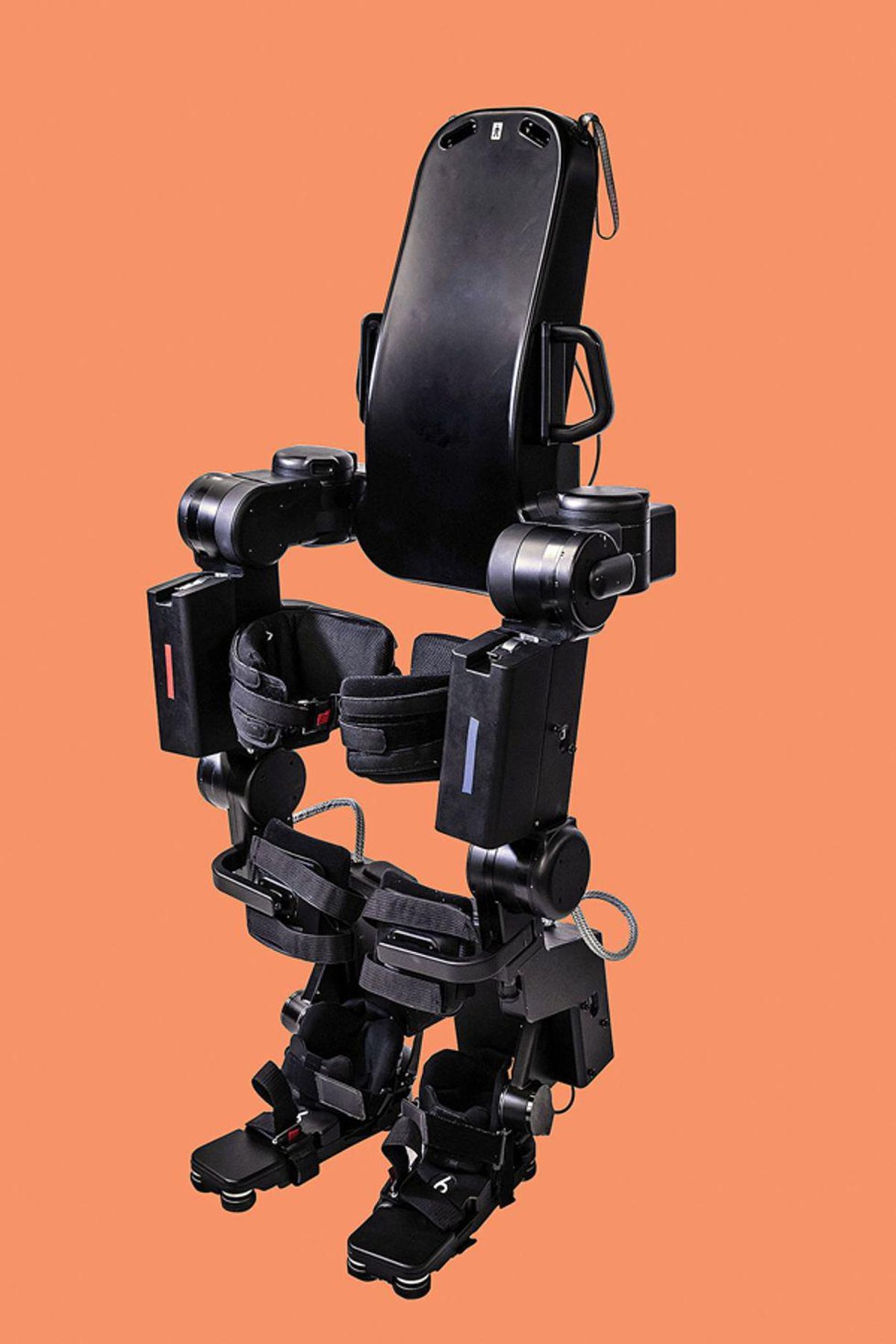Caltech’s Brain-Controlled Exoskeleton Will Help Paraplegics Walk
The exoskeleton’s neural connections will enable people with spinal cord injuries to balance and walk without crutches

This lower-body exoskeleton, developed by Wandercraft, will allow disabled users to walk more dynamically.
Bipedal robots have long struggled to walk as humans do—balancing on two legs and moving with that almost-but-not-quite falling forward motion that most of us have mastered by the time we're a year or two old. It's taken decades of work, but robots are starting to get comfortable with walking, putting them in a position to help people in need.
Roboticists at the California Institute of Technology have launched an initiative called RoAMS (Robotic Assisted Mobility Science), which uses the latest research in robotic walking to create a new kind of medical exoskeleton. With the ability to move dynamically, using neurocontrol interfaces, these exoskeletons will allow users to balance and walk without the crutches that are necessary with existing medical exoskeletons. This might not seem like much, but consider how often you find yourself standing up and using your hands at the same time.
“The only way we're going to get exoskeletons into the real world helping people do everyday tasks is through dynamic locomotion," explains Aaron Ames, a professor of civil and mechanical engineering at Caltech and colead of the RoAMS initiative. “We're imagining deploying these exoskeletons in the home, where a user might want to do things like make a sandwich and bring it to the couch. And on the clinical side, there are a lot of medical benefits to standing upright and walking."
The Caltech researchers say their exoskeleton is ready for a major test: They plan to demonstrate dynamic walking through neurocontrol this year.
Getting a bipedal exoskeleton to work so closely with a human is a real challenge. Ames explains that researchers have a deep and detailed understanding of how their robotic creations operate, but biological systems still present many unknowns. “So how do we get a human to successfully interface with these devices?" he asks.
There are other challenges as well. Ashraf S. Gorgey, an associate professor of physical medicine and rehabilitation at Virginia Commonwealth University, in Richmond, who has researched exoskeletons, says factors such as cost, durability, versatility, and even patients' desire to use the device are just as important as the technology itself. But he adds that as a research system, Caltech's approach appears promising: “Coming up with an exoskeleton that can provide balance to patients, I think that's huge."

One of Ames's colleagues at Caltech, Joel Burdick, is developing a spinal stimulator that can potentially help bypass spinal injuries, providing an artificial connection between leg muscles and the brain. The RoAMS initiative will attempt to use this technology to exploit the user's own nerves and muscles to assist with movement and control of the exoskeleton—even for patients with complete paraplegia. Coordinating nerves and muscles with motion can also be beneficial for people undergoing physical rehabilitation for spinal cord injuries or stroke, where walking with the support and assistance of an exoskeleton can significantly improve recovery, even if the exoskeleton does most of the work.
“You want to train up that neurocircuitry again, that firing of patterns that results in locomotion in the corresponding muscles," explains Ames. “And the only way to do that is have the user moving dynamically like they would if they weren't injured."
Caltech is partnering with a French company called Wandercraft to transfer this research to a clinical setting. Wandercraft has developed an exoskeleton that has received clinical approval in Europe, where it has already enabled more than 20 paraplegic patients to walk. In 2020, the RoAMS initiative will focus on directly coupling brain or spine interfaces with Wandercraft's exoskeleton to achieve stable dynamic walking with integrated neurocontrol, which has never been done before.
Ames notes that these exoskeletons are designed to meet very specific challenges. For now, their complexity and cost will likely make them impractical for most people with disabilities to use, especially when motorized wheelchairs can more affordably fulfill many of the same functions. But he is hoping that the RoAMS initiative is the first step toward bringing the technology to everyone who needs it, providing an option for situations that a wheelchair or walker can't easily handle.
“That's really what RoAMS is about," Ames says. “I think this is something where we can make a potentially life-changing difference for people in the not-too-distant future."
This article appears in the January 2020 print issue as “This Exoskeleton Will Obey Your Brain."



